This Westchester County landscape was formerly dominated by overgrown, non-native ornamental grasses. They completely covered the network of natural stone walkways and steps. We removed most of the existing vegetation and replaced it with a contemporary meadow-style planting. The clients love their new native pool landscaping that accentuates the masonry rather than disguising it.

Landscape Design Master Plan for Native Pool Landscaping
We developed the Landscape Design Master Plan for this native pool landscaping over the winter and developed a rendered plan and planting plan. The inspiration for the pool landscape was native meadow and prairie environments.
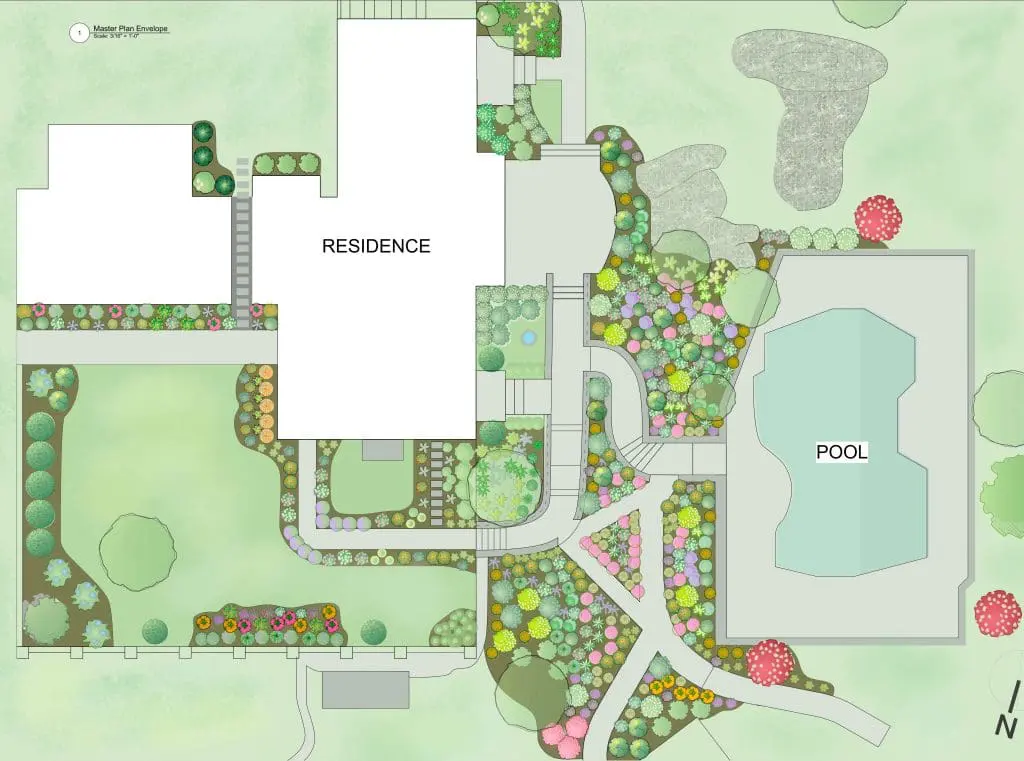
Most prairie plants bloom for long periods throughout the summer, and native prairie grasses are low-maintenance plants with year-round interest. Ornamental grasses provide nesting materials for birds and seed heads as food. This native pool landscape is a layered habitat for birds and pollinators.
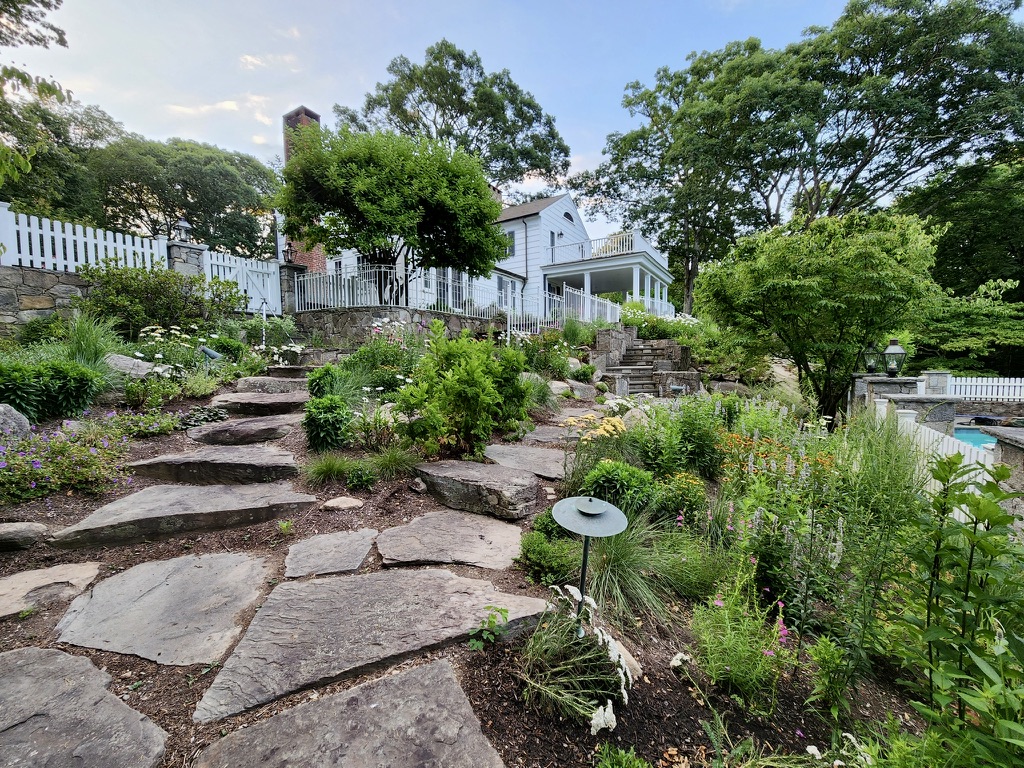
In this landscape, we utilized Switchgrass, Little Bluestem, Pink Muhly Grass and Prairie Dropseed. Each of these grasses puts on a unique show in fall – from fluffy pink and gold seed heads to striking red foliage.
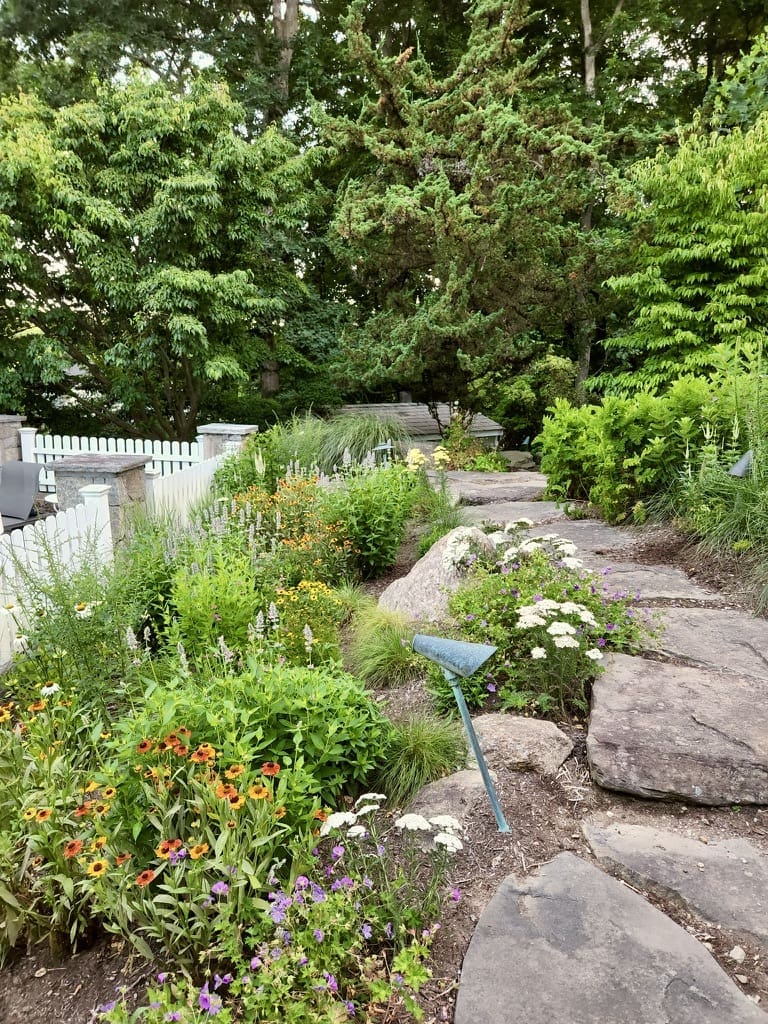
Perennial color – and pollinator food – comes from Agastache, Helenium, Coneflower, Yarrow, Penstemon and Yarrow. A selection of succulents fills in cracks of the newly revealed natural stone masonry.
Reimagining a Front Entry Courtyard
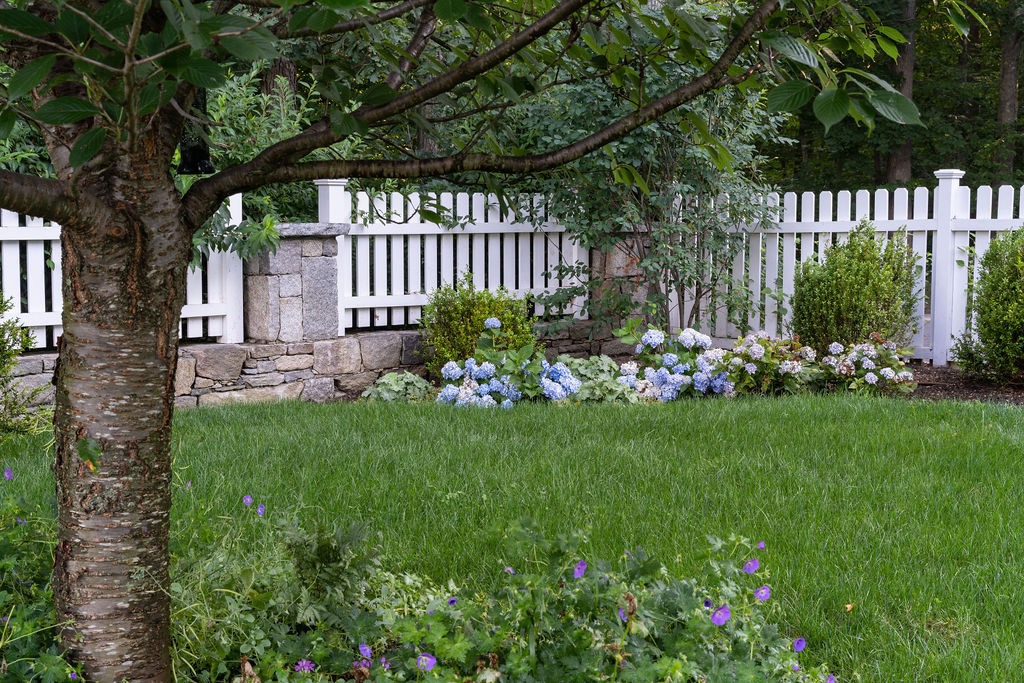
The front entrance courtyard featured typical landscaping – boxwoods and hostas – but failed to “wow” or provide many ecosystem services.
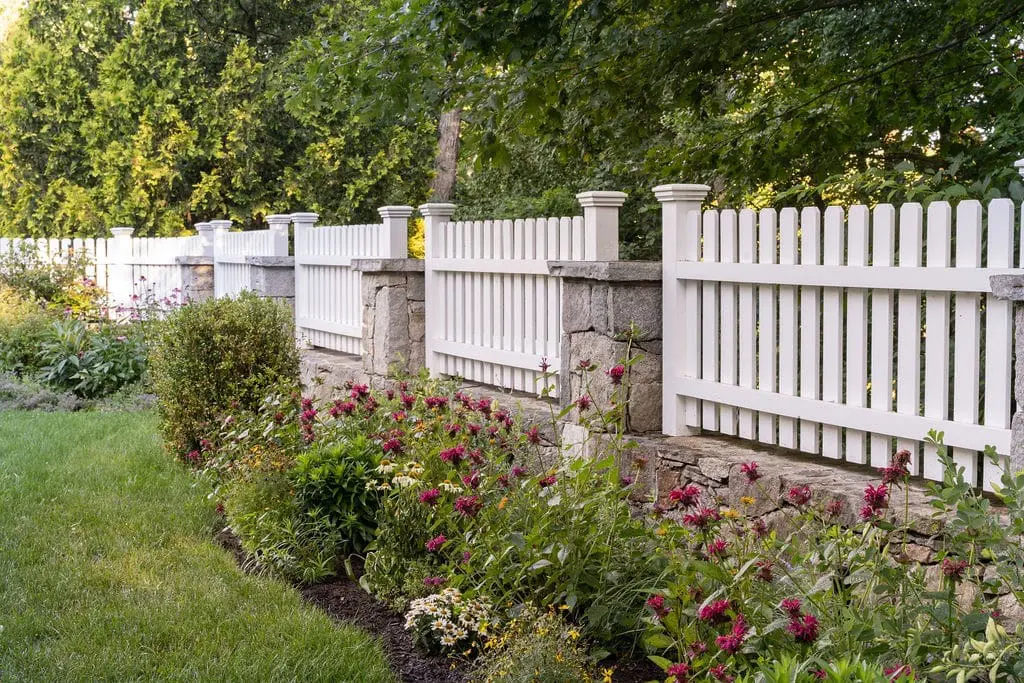
We created several new beds – pollinator gardens flanking the existing walkway and along the middle of the fence. Some of the perennials from the pool area are repeated here while new favorites are introduced – Coreopsis, Lavender, Geranium, and Beebalm.
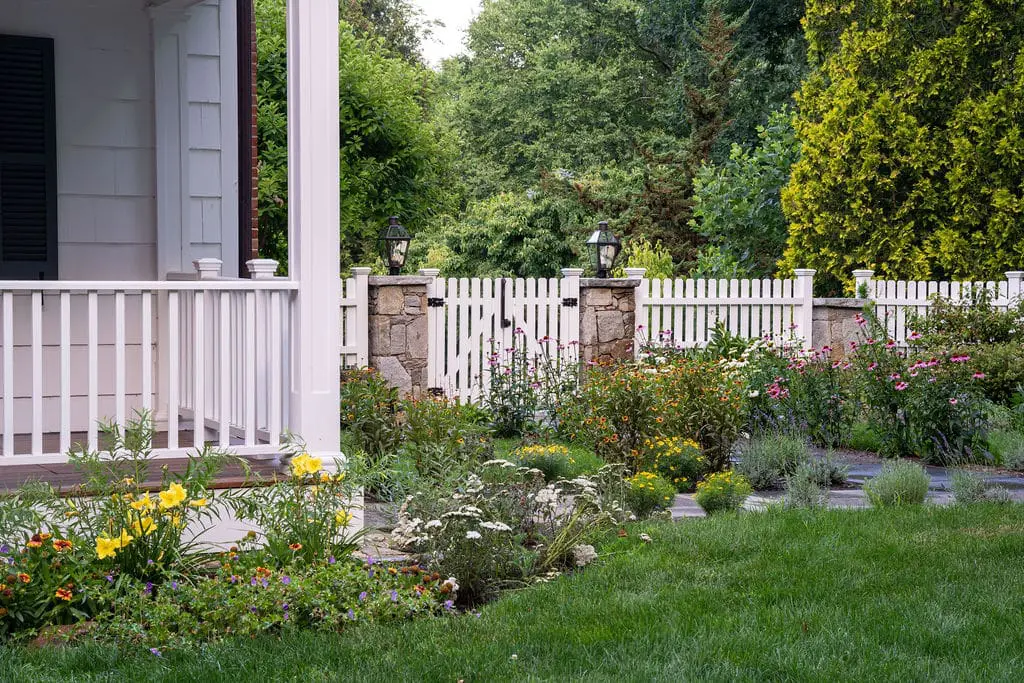
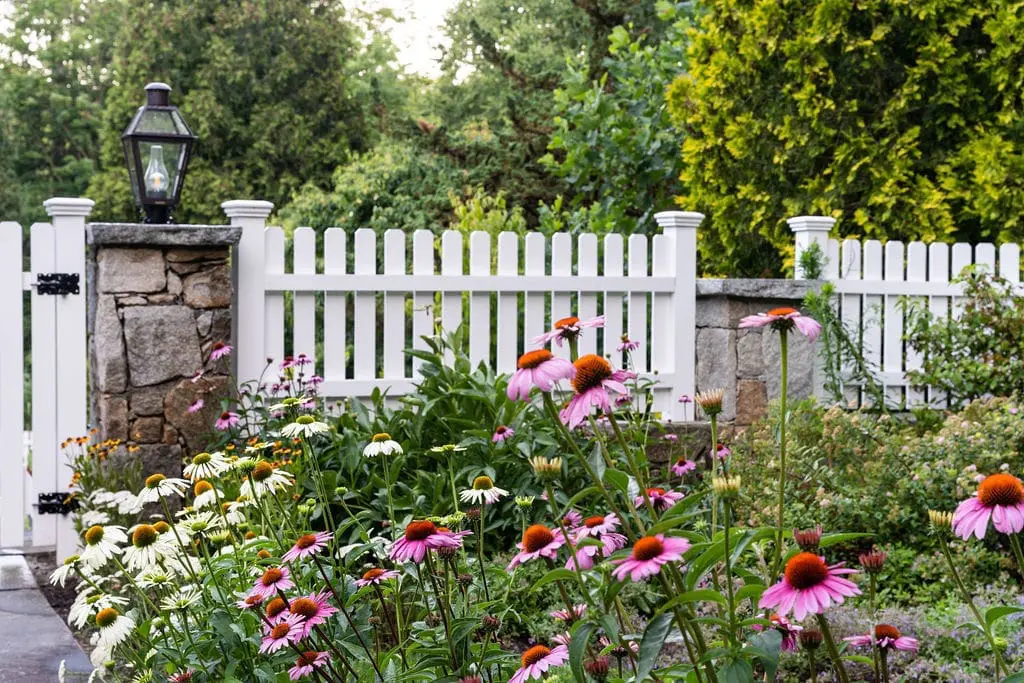
The diversity of plant material ensures that something is always blooming, going to seed, losing its chlorophyll. The garden is never the same but it is always interesting and eye-catching. Plant diversity correlates to soil microbe diversity – the essential foundation to plant health, resilience, stormwater absorption and carbon sequestration.
Repurposing Existing Vegetation
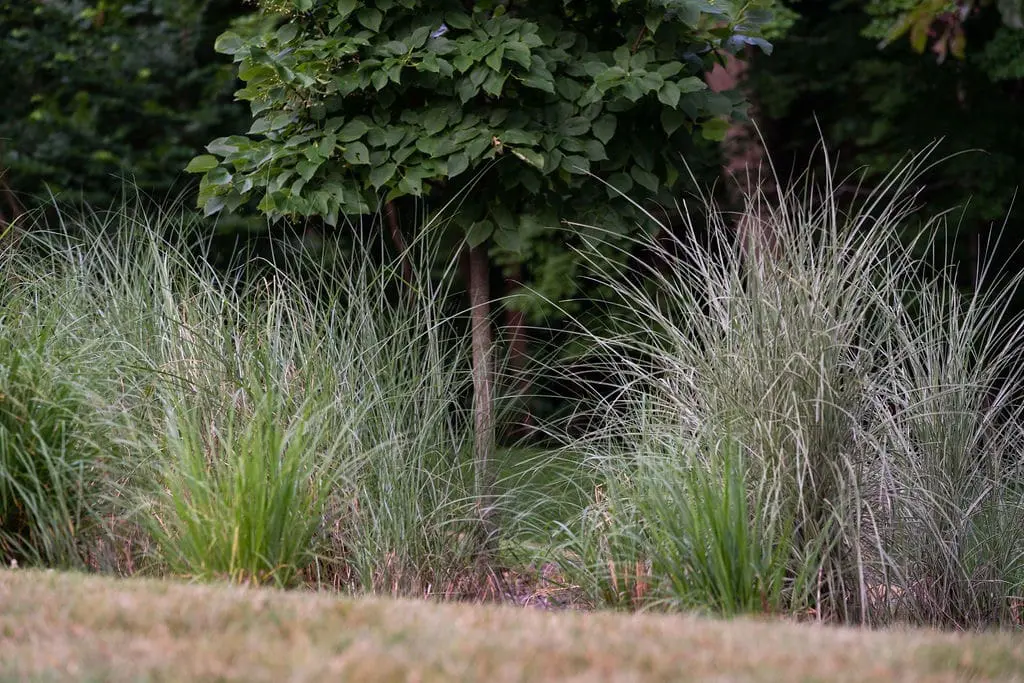
The existing Miscanthus grasses were overgrown and overcrowding the pool landscape. We transplanted many of the grasses to create a new grass garden in the expansive lawn. This will be a low maintenance garden, and by replacing a section of lawn, we are automatically reducing gas, water, and fertilizer inputs.

Part of the project involved soil testing and installing a low maintenance 100% organically managed and maintained lawn. This requires proper irrigation and mulch mowing, provided by our outstanding partners and good friend Organic Landscapes of Bedford NY.
Designing a Veggie Garden
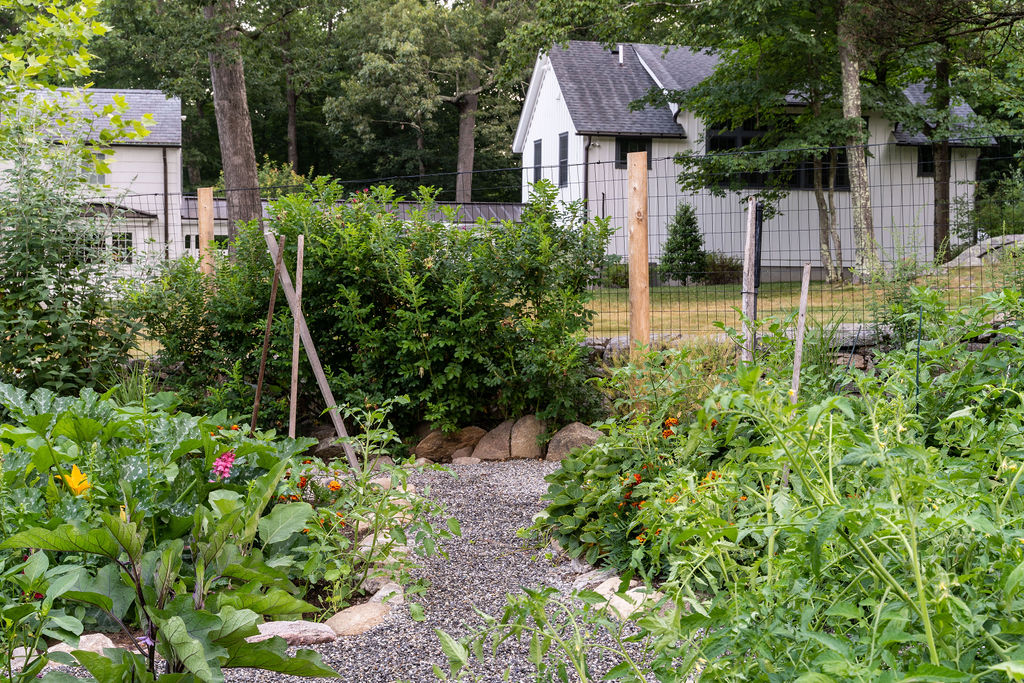
This client is a proud summer vegetable gardener. Their existing garden however, was one extra large bed with no thought for how to access the plants for weeding and harvesting.
The old design also had a narrow border of lawn between the fence and beds. This is poor planning and would create a maintenance nightmare — grass clippings always ending up in the veggie beds causing extra weeding! \
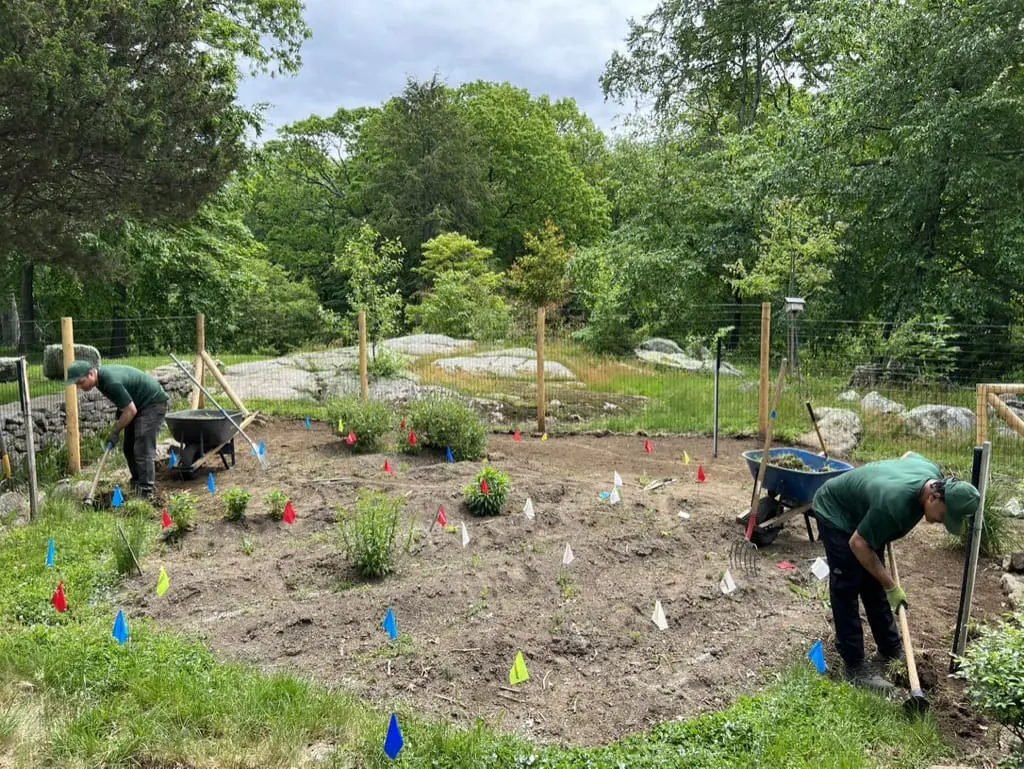
We removed the lawn and re-designed the garden into four quadrants, lined with small rocks. Gravel paths cross through the plots and around the perimeter.
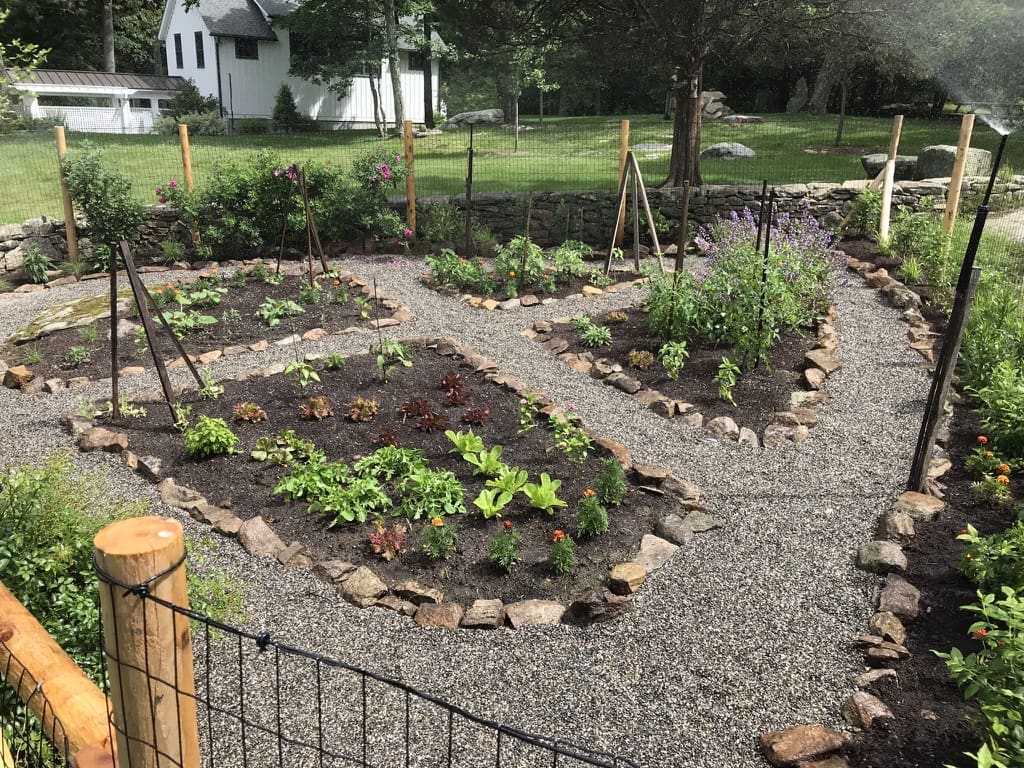

A border of pollinator-attracting perennials masks the fence surrounding the vegetable garden. A bench offers a resting place to admire the garden.

To start your ecological landscape design, contact us to schedule a professional consultation or free 15-minute discovery call.
—
Green Jay Landscape Design
Where Design Meets Ecology
914.560.6570